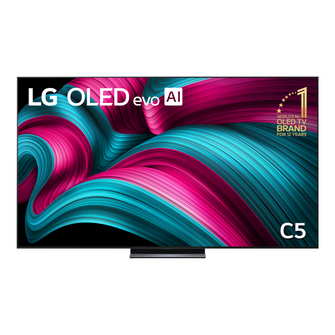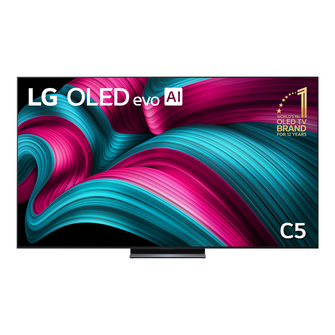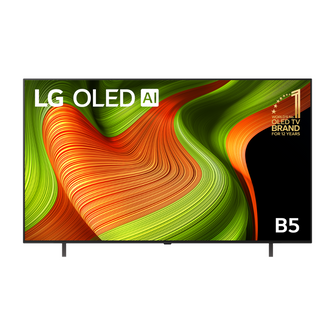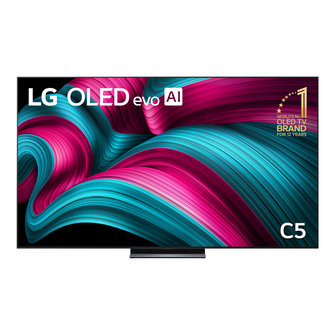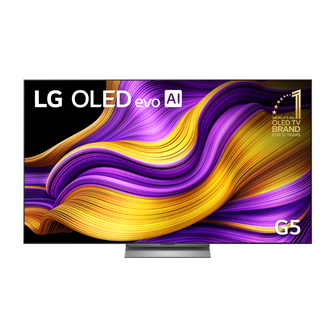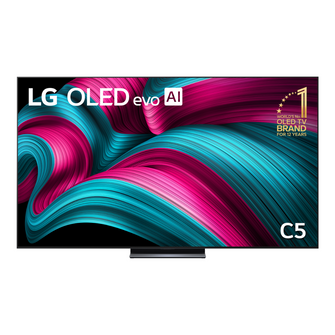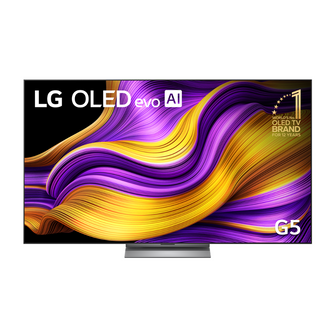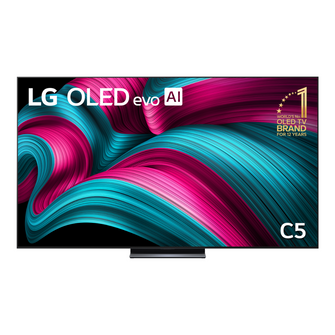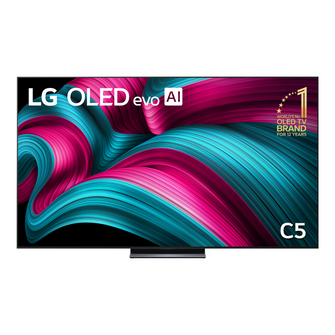OLED TVs, LCD, QLED, CRT, LED, Mini LED – it’s easy to get lost in the alphabet soup of TV technologies. If you’re shopping for a new TV, the technology you really need to know about is OLED.
OLED technology stands for “Organic Light-Emitting Diode”. It uses thin layers of carbon-based organic compounds that emit light when electricity passes through — no backlight needed. The lack of backlight completely changes how a TV looks and behaves.
What is a diode?
A diode is a component that lets electricity flow in only one direction, which helps control how each pixel switches on and off. It’s a key part of how OLED achieves such precise light control.
What is backlighting?
The backlight is a layer of lights behind the TV panel that lights up the pixels on the screen. Lighting up the pixels is what creates the picture you see on the screen.
All other panel technologies - LED, QLED, Mini-LED - have a layer of backlights. OLED is the only TV panel technology that doesn't have that extra layer. Each pixel in an OLED panel lights up by itself.

Why OLED TVs Image Quality is Better
In LED and QLED TVs, the backlight can spill light into dark parts of the image (this is called "light bleed"). Light bleed happens because the light from the backlight is shared across multiple pixels. Light bleed can cause dark parts of the picture, like shadows, to look a bit grey or washed out.
OLEDs don’t have that problem. Because each pixel is its own light source, it can turn off completely to create true black. No light bleed or greyness. Just deep, inky black that makes everything else pop.
It's especially noticeable in high-contrast scenes like a starry sky, or a candle in a dark room. The picture feels sharper and is more lifelike and immersive, with real depth.
Explore our range of OLED TVs.
More Than a Pretty Picture
OLEDs aren't just good for jaw-dropping image quality (though they are one hundred percent good for that). The benefits go beyond what's on the screen.
Faster, Smoother, More Responsive
Thanks to near-instant pixel response times, motion stays smooth and blur is kept to a minimum. Fast-moving content like action movies, live sports or competitive gaming stays crisp and fluid. Gamers especially will notice the difference.
Easier on the Eyes
OLED screens tend to be less aggressively bright than traditional LED TVs, which is a good thing if you’re watching in a dim room or pulling a late-night game session. You still get vibrant colours and contrast, just without that retina-searing backlight. It’s a more comfortable watch, especially for longer viewing sessions.
The self-lighting pixels also have a very wide viewing angle, so the picture looks just as good from all but the most extreme angles. This means that no matter where in the room you sit you’ll be able to see the picture perfectly without any colour distortion, for an immersive experience beloved by any home cinema enthusiast.
Thin, Light, and Looks Like Art
With no bulky backlight unit, OLED panels are incredibly slim and very light. Some LG OLEDs are only 20mm thick (that's thinner than most picture frames). That sleek design makes them easier to wall mount, and they just look better in your space. LG even leans into that with their Gallery Series, which sits almost flush to the wall and genuinely looks like it belongs in an art gallery.
Who Will Love OLED Screens?
Gamers
OLEDs are incredibly responsive, with fast refresh rates and minimal blur. Motion is smoother, darker scenes are clearer, and there’s no harsh brightness blinding you at 2am. Less eye strain, more wins.
Given that OLED is an advanced display technology, these models come with high-end features as standard. High refresh rates, low input lag, support for variable refresh rate (VRR), and HDMI 2.1 are all commonly included. That means smoother gameplay, better motion handling, and full compatibility with next-gen consoles and high-performance devices right out of the box.
Movie Buffs
If you’re watching in a dark room, nothing beats OLED. The contrast is cinematic and the colours are accurate. Plus, the wide viewing angles mean the picture still looks great no matter where you're sitting on the couch.
You’ll notice richer detail in shadows, smoother gradients in bright scenes, and no weird glow or patchiness in dark areas. Whether you’re watching a moody drama or a big-budget action flick, OLED brings out the full range of what the filmmakers intended. It holds up beautifully even in a completely dark room, giving you that cinema feel without the need for a projector.
Style-Seekers
OLED panels are ridiculously thin. No bulky backing, no chunky frame. LG’s Gallery Series is designed to hang on your wall like actual artwork, and it looks just as good off as it does on.
But Aren’t Other TVs Brighter?
They can be, especially under showroom lights. That brightness is usually making up for poor contrast or weaker colour accuracy. At home, you don’t need a torch of a TV. You need something that looks great in real conditions, and OLED delivers that without being harsh on the eyes.
How OLED Stacks Up Against Other Technologies
If you’re researching TVs, you’ve probably come across names like QLED, Mini LED, or QNED. Here’s how OLED compares to each of them — and why it often comes out on top.
OLED vs QNED
QNED is LG’s own mix of Quantum Dot and Mini-LED technology, layered over a traditional LCD panel. It’s brighter than OLED and performs well in bright rooms, but it still relies on a backlight. That means it can’t produce true blacks like OLED can, and it can suffer from light bleed in dark scenes. Learn more about QNED technology and how it compares to OLED.
Best for: People who mostly watch TV in well-lit rooms.
OLED wins at: Contrast, colour accuracy, black levels, and viewing angles.
OLED vs QLED
QLED is Samsung’s answer to better colour performance, combining an LCD panel with a layer of quantum dots and an LED backlight. It looks bright and punchy in stores, but it still can’t match the pixel-level control that OLED has. See our range of QLEDs.
Best for: Bright spaces and people chasing a punchy, vibrant image.
OLED wins at: Black levels, subtle detail, and off-angle viewing.
OLED vs Mini LED
Mini-LED shrinks the size of the backlights behind an LCD panel to allow for more precise local dimming. It’s a big step up from traditional LED, but it’s still backlight-based. That means it can’t fully switch off individual pixels like OLED can.
Best for: People who want something close to OLED but a bit cheaper or brighter.
OLED wins at: Precision, clarity in dark scenes, and design (thinner, lighter panels). See our full breakdown: Mini-LED vs QLED vs OLED.
OLED vs LED/LCD
Standard LED/LCD TVs are the most common and affordable, but they use a basic backlight and lack the advanced colour or contrast capabilities of newer tech. You’ll often see greyish blacks, limited viewing angles, and more motion blur.
Best for: Budget-conscious shoppers who just need a TV that works.
OLED wins at: Pretty much everything: picture quality, motion handling, design, and longevity.
Why LG OLED?
While LG didn’t invent the technology, they were the first to successfully develop and mass-produce large-format panels for TVs. That breakthrough brought it out of labs and into living rooms, setting a new standard for visual performance.
Today, LG Display manufactures the high-end panels used by brands like Sony and Panasonic, but LG’s own models consistently lead in picture quality, reliability, and innovation. From the accessible B Series to the ultra-thin Gallery range, LG offers some of the most advanced and refined displays on the market.
So, What Is OLED?
It’s a TV display technology where each pixel lights up on its own, with no backlight. That design allows for perfect blacks, vibrant colours, and razor-sharp contrast — all in a panel that’s thinner, lighter, and more responsive than anything else on the market. Whether you're watching, gaming, or just admiring the thing on your wall, OLED delivers a better experience from every angle.
You can shop the latest OLEDs online or drop into your local Bi-Rite and experience it for yourself. Our team can walk you through the range and help you find the right fit. Once you’ve seen OLED, you won’t want anything else.




